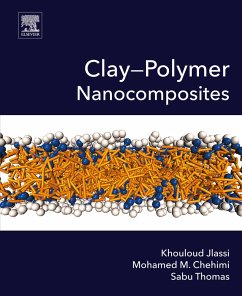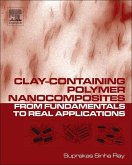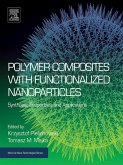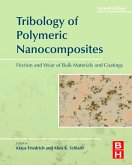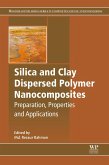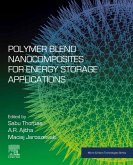Clay-Polymer Nanocomposites reports the background to numerous characterization methods including solid state NMR, neutron scattering, diffraction and vibrational techniques as well as surface analytical methods, namely XPS, inverse gas chromatography and nitrogen adsorption to probe surface composition, wetting and textural/structural properties. Although not described in dedicated chapters, numerous X-ray diffraction patterns of clay-polymer nanocomposites and reference materials are displayed to account for the effects of intercalation and exfoliations of layered aluminosilicates. Finally, multiscale molecular simulation protocols are presenting for predicting morphologies and properties of nanostructured polymer systems with industrial relevance.
As far as applications are concerned, Clay-Polymer Nanocomposites examines structural composites such as clay-epoxy and clay-biopolymers, the use of clay-polymer nanocomposites as reactive nanocomposite fillers, catalytic clay-(conductive) polymers and similar nanocomposites for the uptake of hazardous compounds or for controlled drug release, antibacterial applications, energy storage, and more.
- The most comprehensive coverage of the state of the art in clay-polymer nanocomposites, from synthesis and design to opportunities and applications
- Covers the various methods of characterization of clay-polymer nanocomposites - including spectroscopy, thermal analyses, and X-ray diffraction
- Includes a discussion of a range of application areas, including biomedicine, energy storage, biofouling resistance, and more
Dieser Download kann aus rechtlichen Gründen nur mit Rechnungsadresse in A, B, BG, CY, CZ, D, DK, EW, E, FIN, F, GR, HR, H, IRL, I, LT, L, LR, M, NL, PL, P, R, S, SLO, SK ausgeliefert werden.

